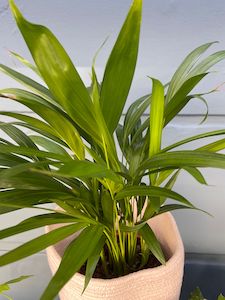Did you know house plants can significantly improve the air quality in your home? Over the past few years the popularity of house plants has grown dramatically, not only do they provide alternative textures and colours into your home, they also have great environmental and health benefits. With this in mind and with the shorter and colder days, we have put together our Top 10 winter house plants, all of which have unique benefits and will tolerate less natural daylight making them your perfect home companion this winter.
If you are looking for a plant that makes a statement, the Calathea Maui is the plant for you. Growing up to 80cm tall, the plant has beautiful bi-coloured leaves which curl as the sun sets and open again when it rises. This tropical plant originates from Brazil so it likes humid conditions, this can be achieved by spraying the plant at least once a week. It also prefers to be in partial sunlight.
The interesting patterned leaves are said to help improve our cognitive capacities which helps us to keep calm as they close their leaves at night, encouraging us to prepare for a good nights sleep. The ideal plant for your bedroom or living room.
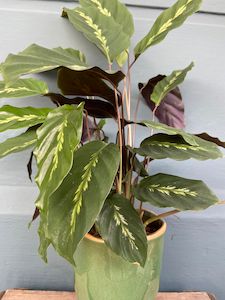

2. Snake Plant
Commonly known as the ‘Mother in Laws Tongue’, the Snake Plant is one of the best air purifying plants and is particularly efficient in absorbing toxins and releasing clean oxygen. Growing up to 60cm tall, the Snake Plant is very tolerant which means it’s a dream to look after. Keep them in partial sunlight and throughout the winter do not water them too much. In fact, as they are used to living in drought conditions, it’s good to let them dry out a bit between watering.

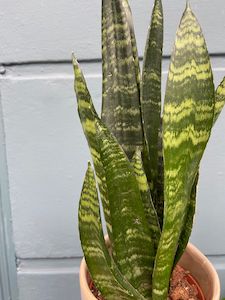
3. Strelitzia
The Strelitzia Plant is more commonly known as Bird of Paradise plant due to its flowers resemblance to the birds of paradise. This plant requires space as it can grow over a metre tall and is the perfect focal piece for a living area or bedroom. In its native environment, the Strelitizia plant enjoys basking in full sun so place in an area which is warm with sunlight throughout the winter months, once we move back into the warmer months, this plant will enjoy a few hours outside in the sunshine.
The leaves of this large plant help to attract dust particles and research has shown that a room with plants can have up to 20% less dust particles in the air than without plants. This plant is easy to care for and relatively forgiving if it gets forgotten for a couple of weeks.
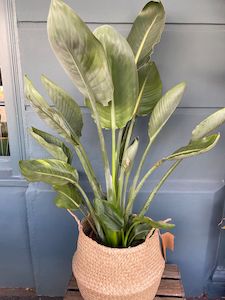

4. String of Pearls
Senecio Rowleyanus, known as String of Pearls, is a delicate and beautiful plant native to South West Africa. Whilst this plant can be a little tricky to look after, it is certainly worth the effort. Trailing plants like these enhance perspectives through the shapes and forms created, the String of Pearls is also an amazing producer of oxygen throughout the night which makes it an ideal bedroom plant as it provides a good nights sleep.
This plant loves to be in a sunny spot and whilst watering should be reduced over the winter months, once every two weeks should be suitable. It likes a warm and dry environment and definitely no misting.
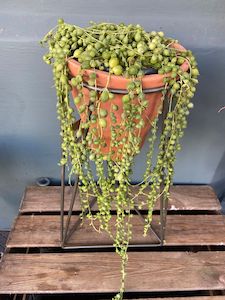
5. English Ivy
English Ivy plants can be kept indoors or outdoors. If kept indoors, they benefit from some direct sunlight throughout the winter months. This evergreen should be kept in a well-drained pot and the soil maintained slightly dry , watering every 5 to 7 days depending on the light and temperature. If you suffer from allergies this plant is perfect for you as its especially good for removing toxins and mould particles from the air. It’s also a great plant to have in your bedroom especially if you suffer from asthma as it can aid a good nights sleep.
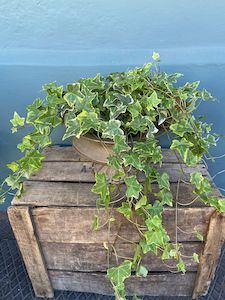
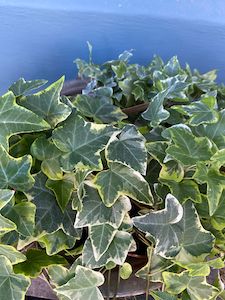
6. Anthurium
If you are looking for a tropical plant to add some colour into your home this winter, look no further than the Anthurium. Available in a vast array of colours and if cared for correctly these plants can flower throughout the year. Anthuriums are also listed on NASA’s air purifying plants list as their large leaves suck up ammonia, formaldehyde, toluene and xylene making them the ideal plant for the workplace or home office especially in places with printers or adhesives.
Anthuriums do need a little extra care throughout the winter months as they are a tropical plant, so place them in a spot with direct sunlight and away from open windows, vents and fans. They should be watered around once a week and should you wish to pamper your plant a little water mist every so often will be appreciated.
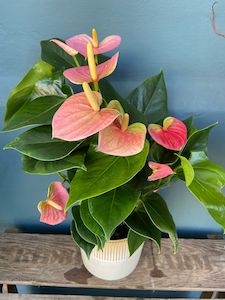

7. Monstera
One of our most popular house plants. TheMonstera is extremely easy to care for and similar to the strelitzia, this plant draws away dust and pollutants from the air with its large waxy leaves. Also known as the ‘Swiss cheese Plant’, the name given because of the holes in the leaves, the Monstera originates from the tropical rainforests of Southern Mexico to Panama.
Monsteras are great because they can grow anywhere as long as they are warm and kept watered which makes them ideal for any location in the house. Throughout the winter, this plant needs to be watered every two to four weeks, the first two inches of water should be dried out completely before being watered again. Their leaves are toxic if ingested by people or animals so be aware if you have small children or pets.


8. Aloe Vera
Aloe Vera is a great indoor companion, this easy going succulent look stylish and are very helpful too. These plants love to be in a location full of bright, indirect sunlight and kept between 13 and 27 degrees centigrade. Aloe Vera plants should be watered every 3-4 weeks throughout the winter months, ensuring the top third of the potting soil has dried out before watering again.
The Aloe Vera is perfect for a kitchen or utility room as it purifies the air, absorbing formaldehyde and benzene which are two chemicals commonly found in household cleaning products. This plant also provides Aloe Vera gel, remove a mature leaf and cut lengthwise to reveal the gel, this can then be applied to burns, bites and rashes. The gel from your plant should not be ingested.
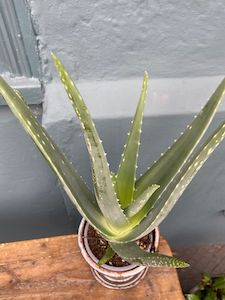

9. Spider Plant
Chlorophytum Comosum, also known as the Spider Plant, is considered the most adaptable and easiest to grow and maintain. Providing them with well-drained soil and bright, in-direct sunlight will see them flourish. Watering them once a week is usually about right in the winter however make sure the soil has dried out before watering. If you see the leaves have started to go a little brown, this is caused by the fluoride in the water, switch to distilled water to help flush out the minerals and salts. Along with being an air-purifying plant, they are also non-toxic which makes them ideal to have around small children and pets.

10. Kentia Palm
Native to Lord Howe Island in the South Pacific, the Kentia is also known as a Paradise Palm. Growing to over a metre in height, these plants provide the ideal slice of the tropics to your home. Helpfully, they are also notoriously known for withstanding conditions many houseplants cannot tolerate. They are fairly drought tolerant however they do not like to be overly dry or overly wet, so water only when the top inch of soil starts to dry out. This plant will also like an occasional mist. During the summer months this plant can be moved outside during the day, during the winter months it likes to be kept in partial sunlight. Air-purifying and resilient, this palm make it the ideal office or living room companion.
